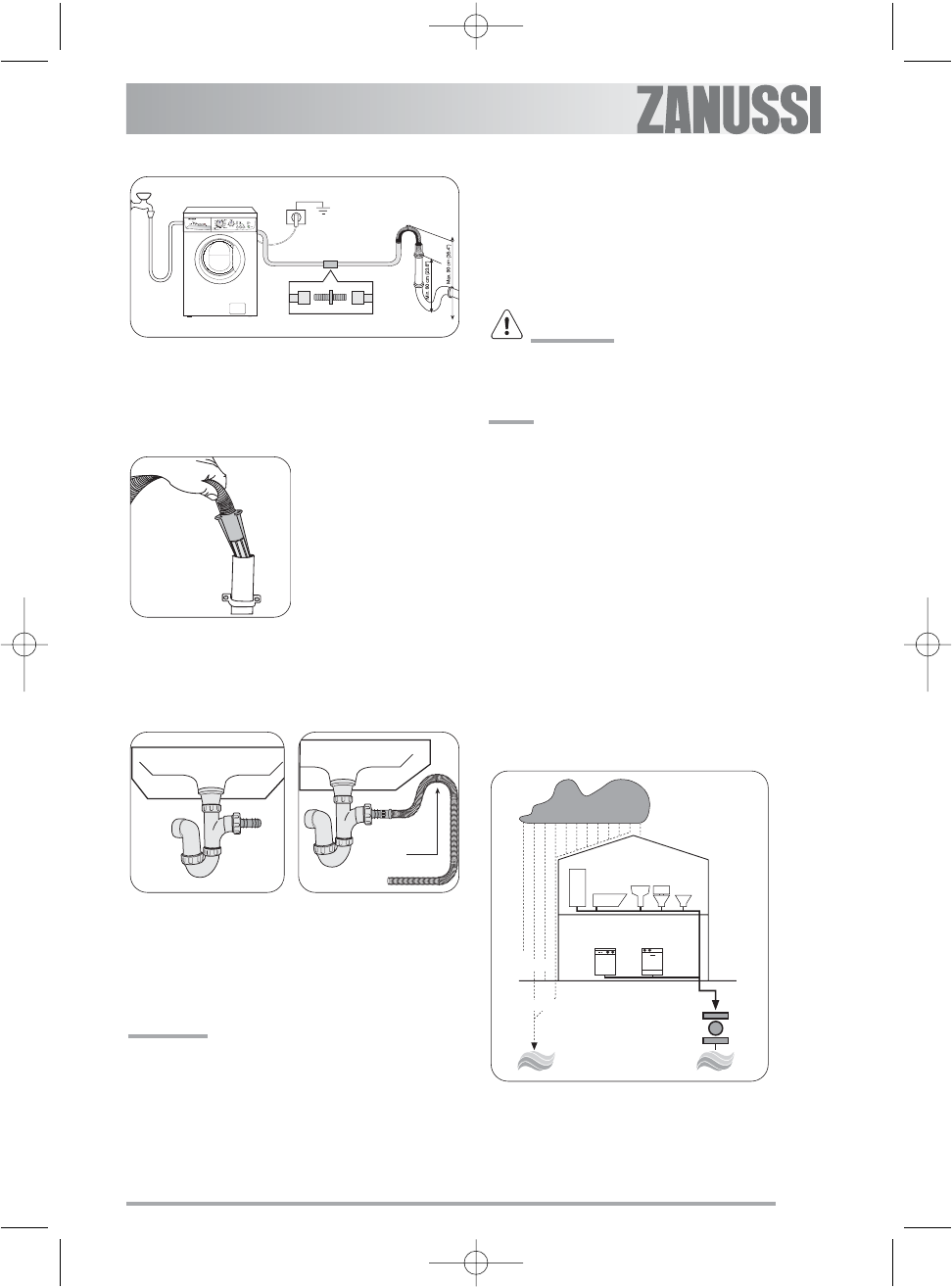
53
The drain hose may be extended to a
maximum of 4 metres. An additional drain
hose and joining piece is available from your
local Service Force Centre. The joining piece
must have an internal diameter of 18mm.
If your drain hose
looks like this (see
below) you do not
require the «U»
piece. Just push the
hose firmly into the
standpipe.
2. Onto a sink outlet spigot.
If the outlet spigot has not been used before,
remove any blanking plug that may be in
place.
Push the drain hose onto the spigot and
secure with a clip if required, ensure a loop is
formed in the drain hose (see diagram) to
prevent waste from the sink entering the
washing machine.
Important!
Before connecting the machine to new
pipework or to pipework that has not been
used for some time, run off a reasonable
amount of water to flush out any debris that
may have collected in the pipes.
Loop
Special conditions
If the floor is carpeted or covered with crumbly
or soft material, insert a rigid support base
under the feet to prevent noise, vibration or
displacement. The base should protrude a few
centimetres beyond the edges of the machine.
WARNING!
The machine should NOT be placed on deep
pile carpeting.
NOTE
Please ensure that when the appliance is
installed it is easily accessible for the engineer
in the event of a breakdown.
In the interest of the environment
Washing machines and dishwashers should
be connected to the FOUL drainage system,
the water will then be taken to a sewage
works for treatment before being discharged
safely into a river. It is essential that these
appliances are not connected to the surface
water drainage system as this water is
discharged directly into a river or stream and
may cause pollution.
If you require any further advice please
contact your local water authority.
SHOWER
BATH
SINK TOILET
BIDET
WASHING
MACHINE
DISHWASHER
RAINWATER
'RUN-OFF'
SURFACE WATER
DRAINS & SEWERS
UNTREATED
DISCHARGE
RIVER
FOUL DRAIN
FOUL SEWERS
SEWAGE
TREATMENT
WORKS
RIVER
TREATED
DISCHARGE
126.2936.33…ZWF615.qxd 15/5/08 11:44 Página 53


















